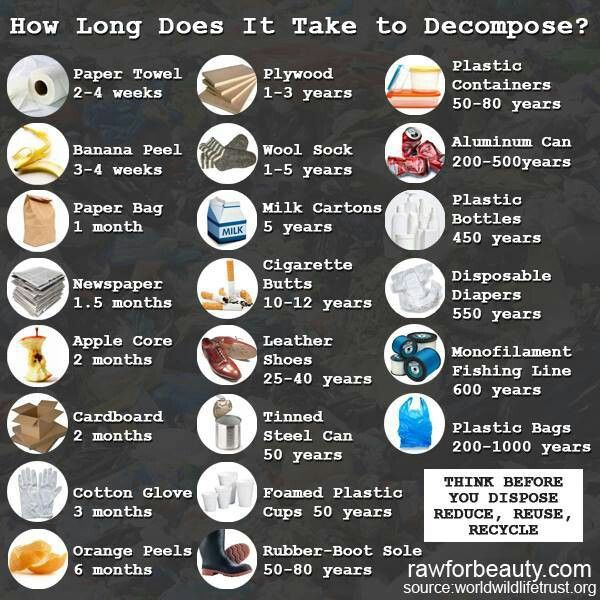How long does thrush take to appear. Thrush in Newborns: Causes, Symptoms, and Treatment Options
How long does thrush take to appear in newborns. Is thrush contagious between mother and baby. What are the common symptoms of oral thrush in infants. How is thrush diagnosed and treated in babies.
Understanding Oral Thrush in Newborns
Oral thrush, medically known as oral candidiasis, is a common yeast infection that affects newborns and infants. It’s caused by an overgrowth of the fungus Candida albicans, which naturally exists in small amounts in our bodies. In newborns, whose immune systems are not fully developed, this fungus can proliferate more easily, leading to the characteristic symptoms of thrush.
Can thrush develop quickly in babies? Indeed, thrush can appear relatively rapidly in newborns, sometimes within a few days after birth. The warm, moist environment of a baby’s mouth provides ideal conditions for yeast growth, especially if the baby’s immune system is compromised or if antibiotics have been used.
The Contagious Nature of Thrush
Is thrush contagious between mother and baby? Yes, thrush can be passed between a mother and her newborn, particularly during breastfeeding. The infection can spread from the baby’s mouth to the mother’s nipples and vice versa. This reciprocal transmission can lead to a cycle of reinfection if both mother and baby are not treated simultaneously.

How does thrush spread during breastfeeding? When a baby with oral thrush breastfeeds, the Candida yeast can transfer to the mother’s nipples. Conversely, if a mother has a yeast infection on her nipples, she can pass it to her baby’s mouth during feeding. This is why it’s crucial for both mother and baby to receive treatment if either one develops thrush.
Identifying Symptoms of Thrush in Newborns
Recognizing the signs of thrush in babies is essential for prompt treatment. The most common symptoms include:
- White, velvety sores in the mouth and on the tongue
- Redness inside the mouth
- Bleeding when the sores are wiped
- Diaper rash
- Mood changes, including increased fussiness
- Difficulty or refusal to nurse due to discomfort
Do all babies with thrush show symptoms? Not necessarily. Some infants may be asymptomatic, making regular oral examinations important during routine check-ups.
Symptoms in Breastfeeding Mothers
Mothers who develop thrush on their nipples due to breastfeeding may experience:
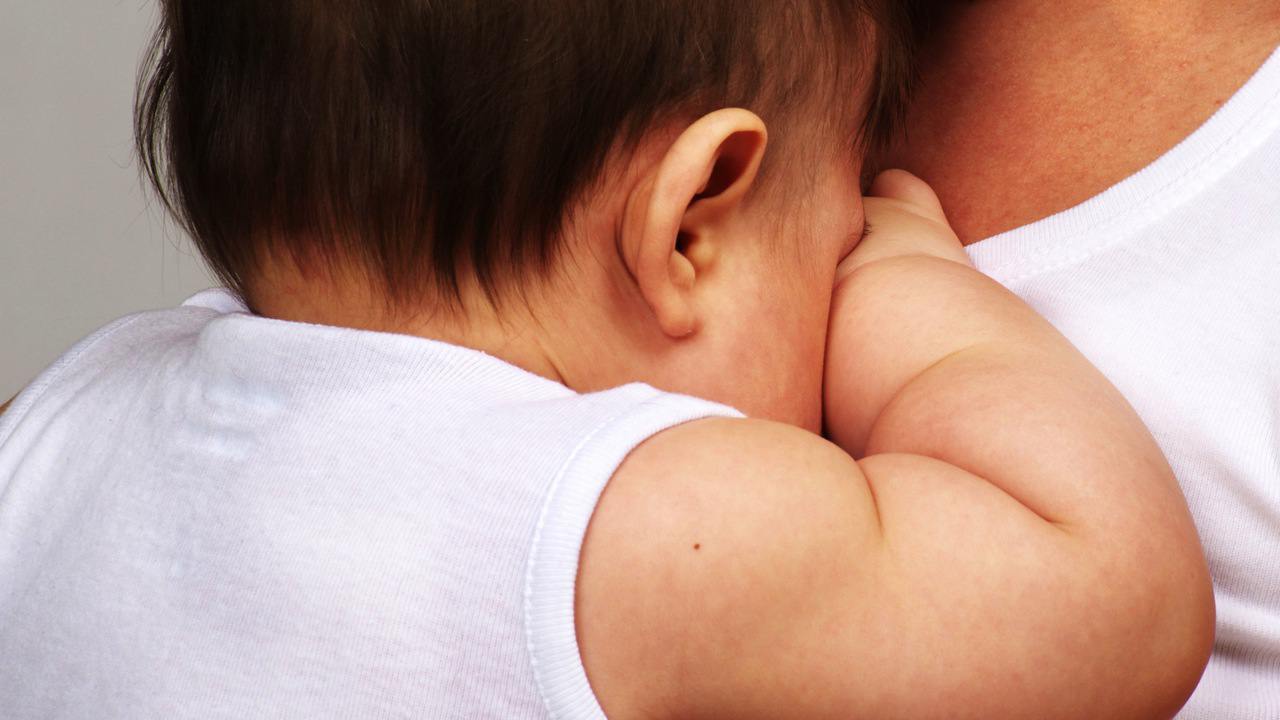
- Deep pink or red, cracked nipples
- Soreness and tenderness during and after nursing
- A burning sensation in the nipples or breasts
Causes and Risk Factors for Thrush in Newborns
Several factors can contribute to the development of thrush in newborns:
- Immature immune system: Newborns’ immune systems are still developing, making them more susceptible to yeast overgrowth.
- Antibiotic use: Antibiotics can disrupt the balance of bacteria in the body, allowing yeast to thrive.
- Maternal yeast infection: If the mother has a vaginal yeast infection during delivery, the baby can contract thrush.
- Pacifier use: Frequent use of pacifiers can increase the risk of oral thrush.
- Humid environments: Warm, moist conditions in the mouth promote yeast growth.
Why do antibiotics increase the risk of thrush? Antibiotics target bacteria, including beneficial ones that normally keep yeast growth in check. When these “good” bacteria are reduced, yeast can multiply more easily, leading to thrush.
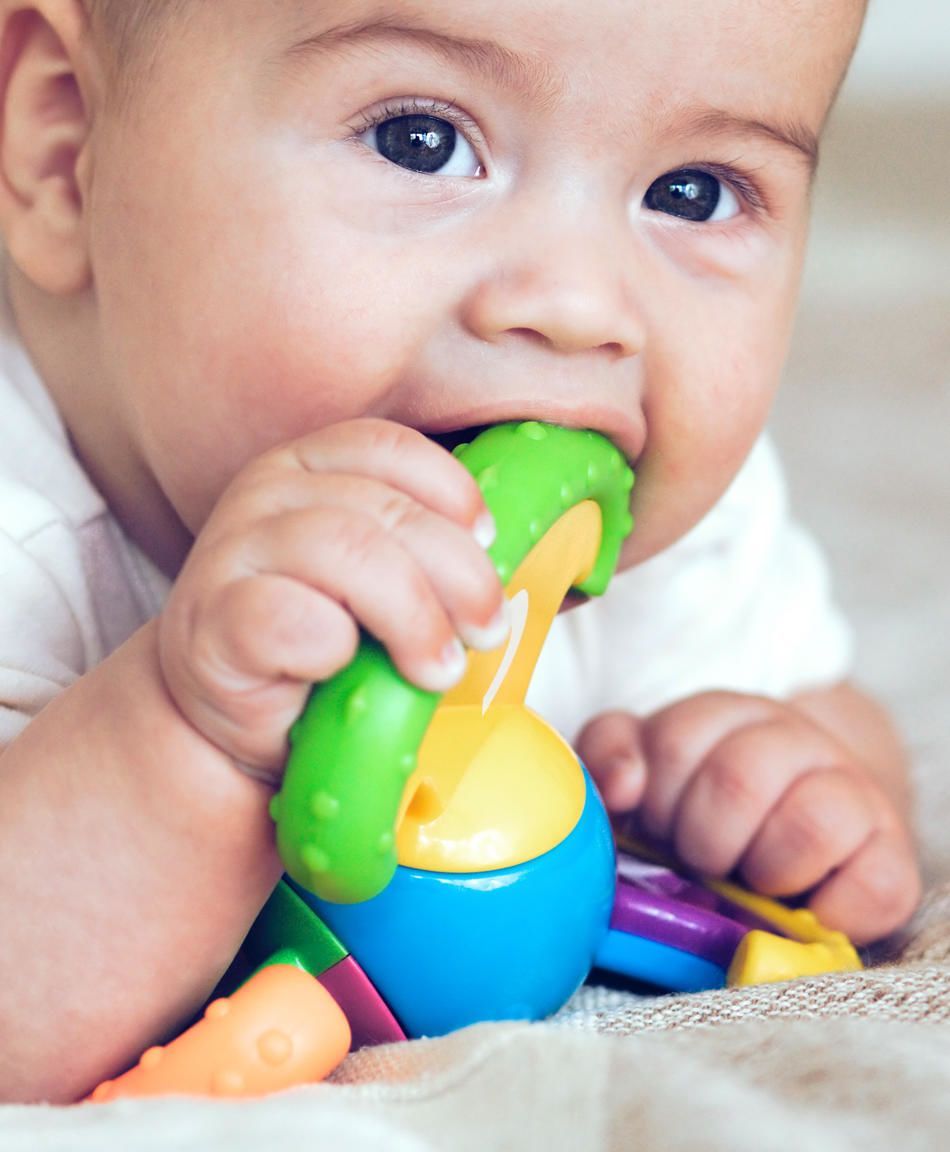
Diagnosing Thrush in Infants
How is thrush diagnosed in babies? In most cases, a healthcare provider can diagnose thrush by visually examining the baby’s mouth. The characteristic white patches on the tongue and inner cheeks are usually distinct enough for a definitive diagnosis.
Are additional tests necessary to confirm thrush? Generally, no further tests are required. However, if the infection is severe or recurrent, the healthcare provider might take a small scraping of the lesions to examine under a microscope or to culture for a more precise diagnosis.
Treatment Options for Oral Thrush
What are the common treatments for thrush in newborns? Treatment typically involves antifungal medications, which can be applied directly to the affected areas in the baby’s mouth. These may include:
- Miconazole gel
- Nystatin suspension
How long does it take for thrush to clear up with treatment? With proper treatment, thrush often resolves within 7 to 14 days. However, it’s important to complete the full course of medication as prescribed, even if symptoms improve earlier.
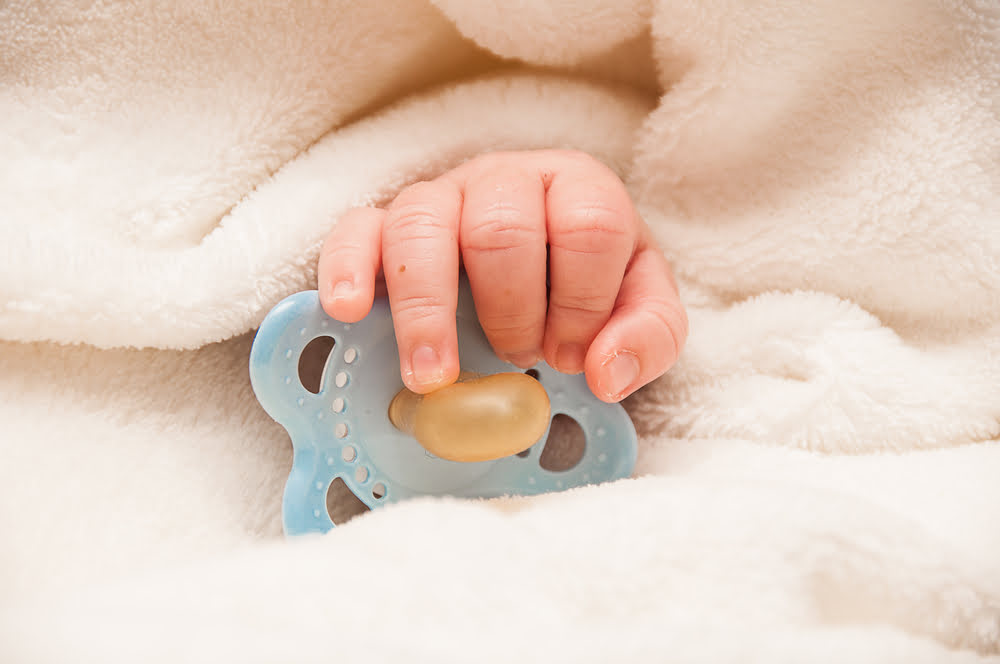
Treating Thrush in Breastfeeding Mothers
For breastfeeding mothers with nipple thrush, treatment options may include:
- Antifungal creams or ointments applied to the nipples
- Oral antifungal medication in severe cases
Why is it crucial to treat both mother and baby simultaneously? Treating both mother and baby at the same time prevents the cycle of reinfection that can occur during breastfeeding.
Prevention Strategies for Thrush
Can thrush be prevented in newborns? While it’s not always possible to prevent thrush, certain measures can reduce the risk:
- Proper hygiene practices, including regular hand washing
- Sterilizing bottles, pacifiers, and breast pump parts
- Limiting antibiotic use when possible
- Treating maternal yeast infections promptly
- Maintaining a healthy diet to support immune function
How effective is probiotics in preventing thrush? Some studies suggest that probiotics may help prevent thrush by maintaining a healthy balance of microorganisms in the body. However, more research is needed to conclusively establish their efficacy in thrush prevention.

Long-Term Outlook and Recurrence
What is the prognosis for infants with thrush? Generally, the outlook for babies with thrush is excellent. Most cases resolve completely with proper treatment and do not cause long-term complications.
Is thrush likely to recur in infants? While recurrence is possible, it’s not common in otherwise healthy infants. However, if thrush keeps coming back, it may indicate an underlying health issue that requires further investigation.
When should parents seek medical attention for recurring thrush? If thrush persists despite treatment or recurs frequently, it’s important to consult a healthcare provider. This could be a sign of an underlying condition affecting the baby’s immune system or other factors that need to be addressed.
Potential Complications of Untreated Thrush
Although rare, untreated thrush can lead to more serious complications in some cases:
- Difficulty feeding, potentially leading to poor weight gain
- Spread of the infection to other parts of the body
- Increased risk of systemic candidiasis in immunocompromised infants
How can parents ensure optimal recovery from thrush? Following the prescribed treatment regimen, maintaining good hygiene practices, and attending follow-up appointments with the healthcare provider are key steps in ensuring a full recovery from thrush.
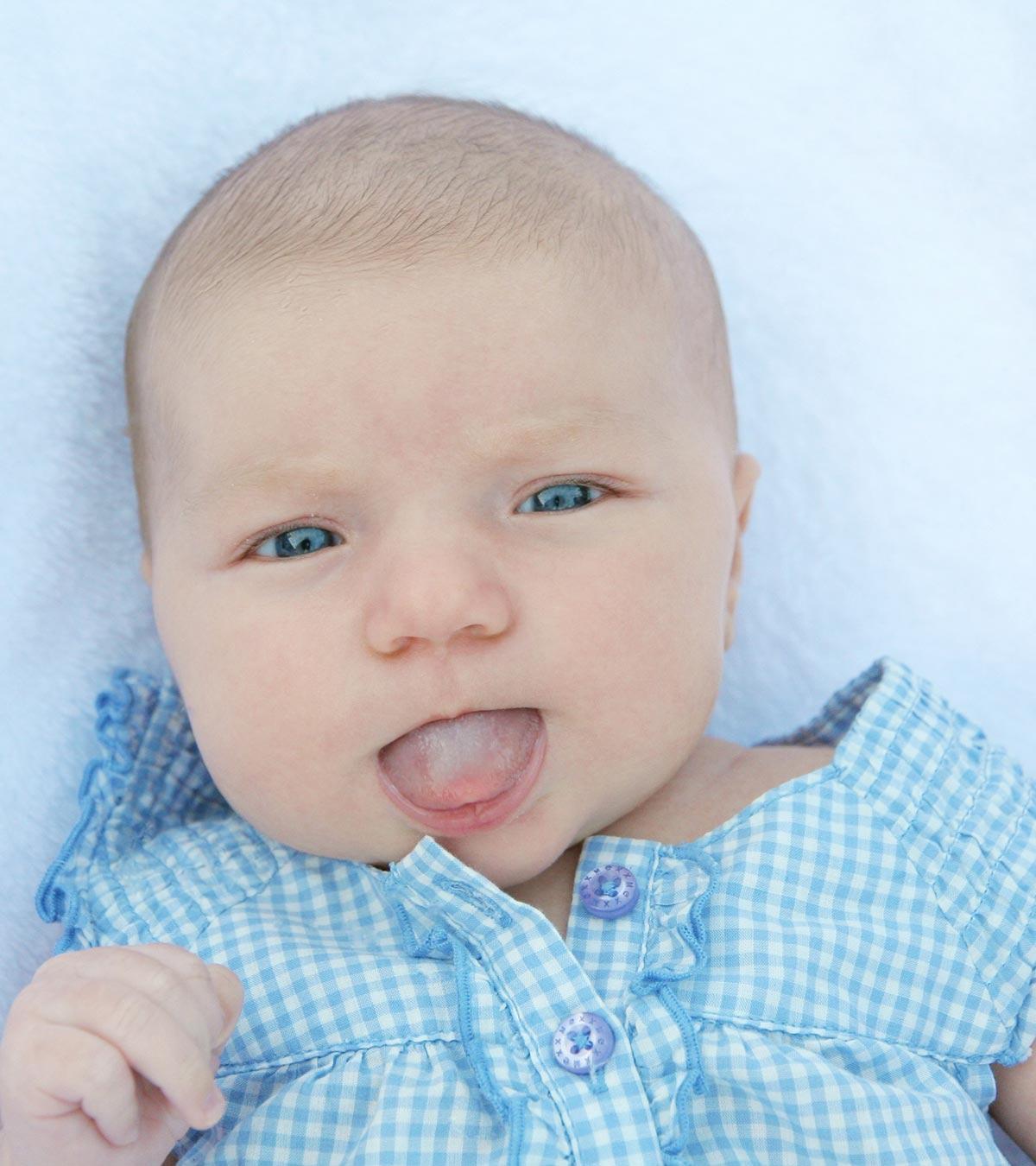
Impact of Thrush on Breastfeeding
How does thrush affect the breastfeeding relationship? Thrush can significantly impact breastfeeding, causing pain and discomfort for both mother and baby. This can lead to:
- Reduced milk supply due to less frequent feeding
- Early weaning if the pain becomes too severe
- Emotional stress for the mother
Can mothers continue breastfeeding while treating thrush? In most cases, yes. Healthcare providers typically recommend continuing breastfeeding during treatment, as the benefits of breastfeeding outweigh the temporary discomfort. However, it’s crucial to follow proper hygiene practices and complete the full course of treatment.
Supporting Breastfeeding Mothers with Thrush
What support do breastfeeding mothers with thrush need? Mothers dealing with thrush while breastfeeding may benefit from:
- Lactation consultant support
- Pain management techniques
- Emotional support from family and healthcare providers
- Education on proper latch and positioning to minimize discomfort
How can partners support mothers dealing with thrush? Partners can play a crucial role by helping with baby care, ensuring the mother gets adequate rest, assisting with medication application, and providing emotional support throughout the treatment process.
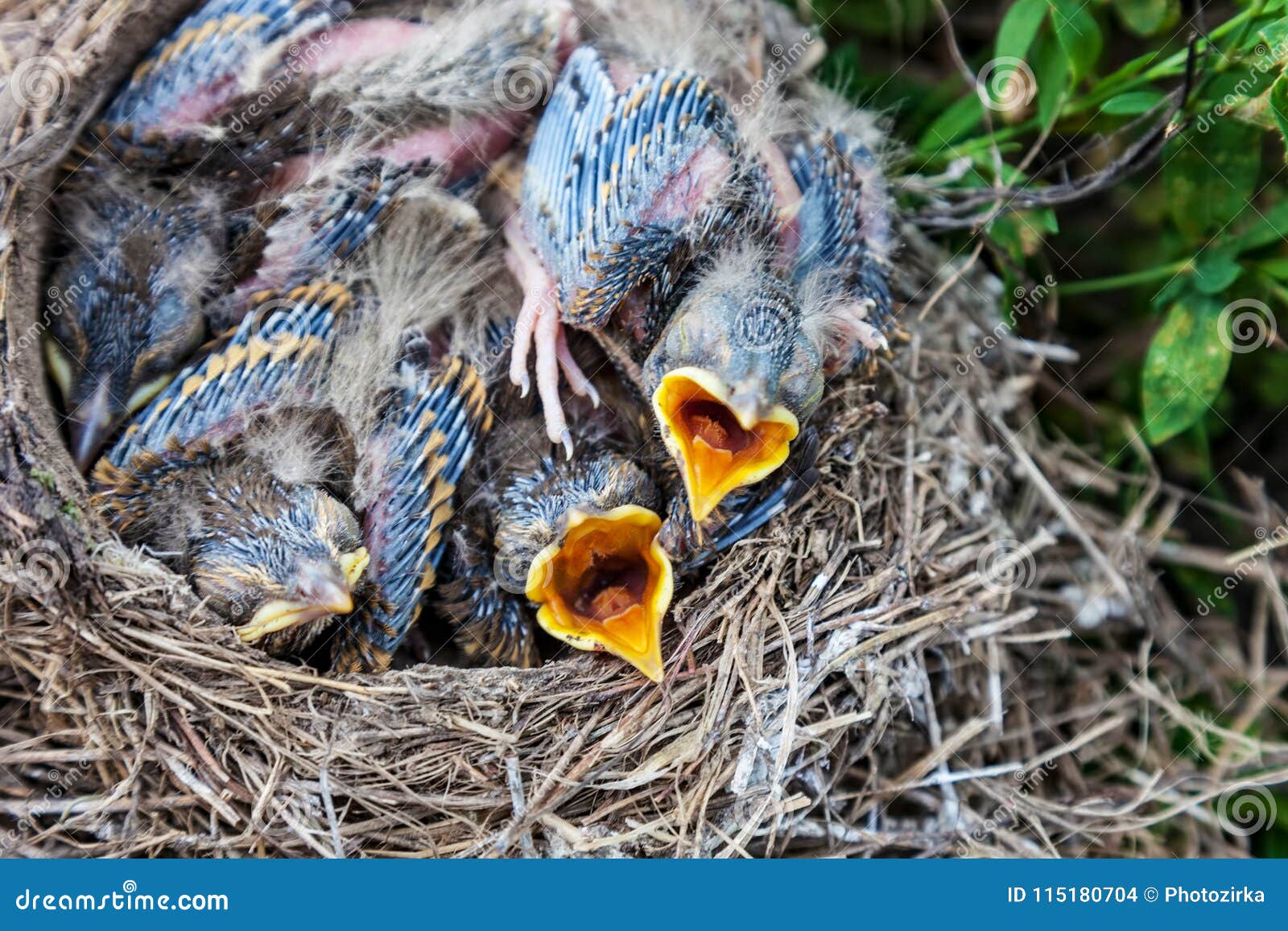
Thrush in Premature Infants
Are premature babies at higher risk for thrush? Yes, premature infants are more susceptible to thrush due to their underdeveloped immune systems and the increased likelihood of antibiotic use in neonatal intensive care units (NICUs).
How is thrush managed in premature infants? Management of thrush in premature babies requires careful consideration of their overall health status. Treatment may include:
- Gentler antifungal medications
- More frequent monitoring
- Extended treatment duration
- Special feeding techniques if oral discomfort is severe
What precautions are taken in NICUs to prevent thrush outbreaks? NICUs typically implement strict hygiene protocols, including:
- Regular hand washing and sterilization of equipment
- Careful monitoring of antibiotic use
- Prompt treatment of maternal yeast infections
- Use of probiotics in some cases, under medical supervision
Thrush and Its Relation to Other Health Conditions
Can thrush be a sign of other health issues in infants? While thrush is often an isolated condition, recurrent or persistent thrush may indicate underlying health concerns such as:
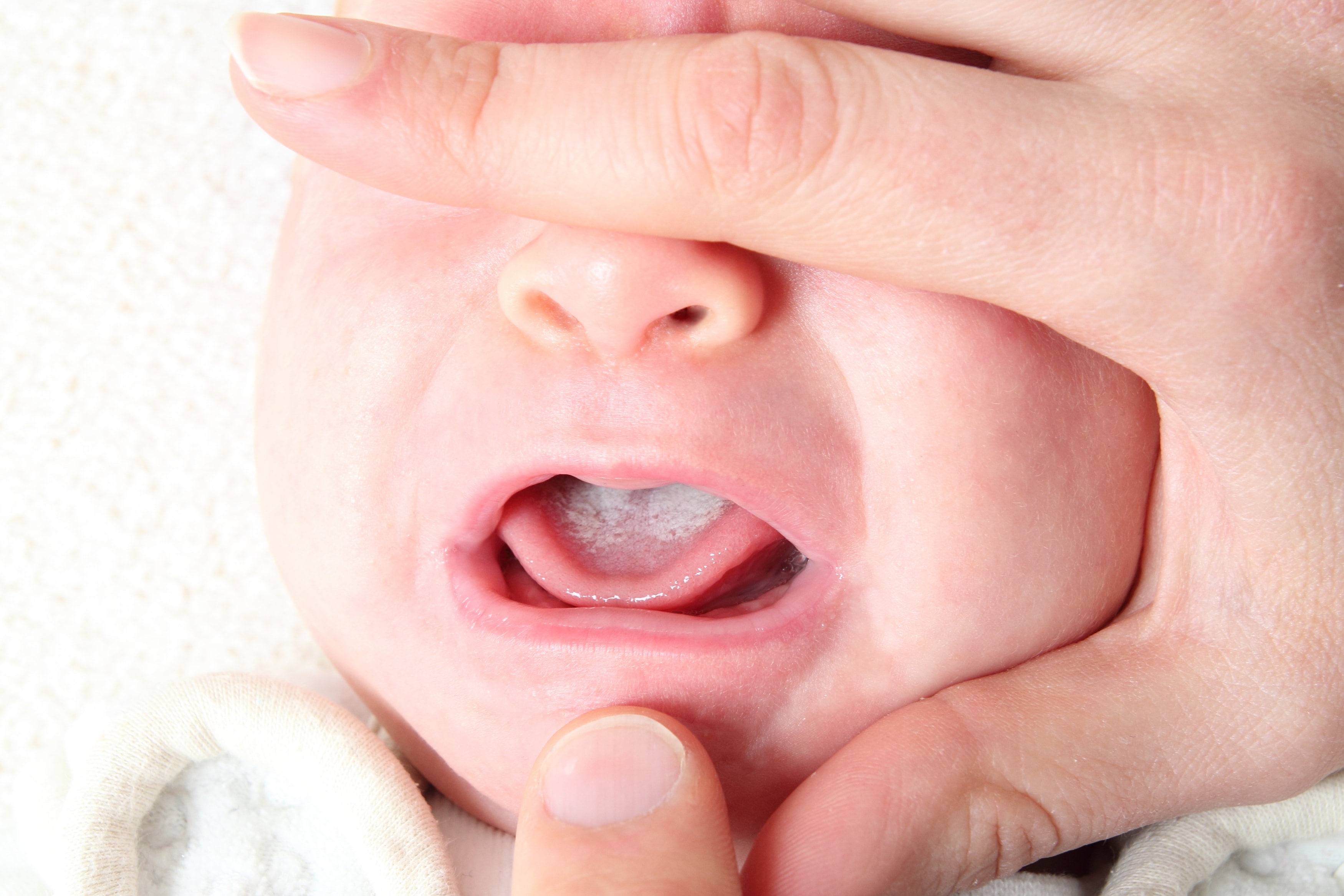
- Immunodeficiency disorders
- Endocrine disorders like diabetes
- Nutritional deficiencies
How do healthcare providers approach recurrent thrush cases? When faced with recurrent thrush, healthcare providers may:
- Conduct a thorough medical history review
- Perform additional diagnostic tests
- Consider referral to specialists if necessary
- Explore potential environmental factors contributing to recurrence
Is thrush linked to long-term health outcomes in infants? Generally, isolated cases of thrush do not have long-term health implications. However, recurrent or severe cases may be associated with other health conditions that require ongoing management.
Alternative and Complementary Approaches to Thrush Management
Are there natural remedies for treating thrush in babies? While medical treatment is the primary approach, some parents explore natural remedies as complementary therapies. These may include:
- Probiotic supplements (under medical supervision)
- Dietary changes for breastfeeding mothers
- Gentian violet (a purple dye with antifungal properties)
How effective are these alternative treatments? The efficacy of alternative treatments for thrush varies, and scientific evidence is often limited. It’s crucial to consult with a healthcare provider before using any alternative remedies, especially in infants.

What dietary changes might help prevent or manage thrush? Some dietary adjustments that may be beneficial include:
- Reducing sugar intake
- Increasing consumption of probiotic-rich foods
- Ensuring adequate vitamin C and zinc intake to support immune function
Can changes in the home environment help prevent thrush? Maintaining a clean, dry environment can help reduce the risk of thrush. This includes:
- Regular cleaning and sterilization of baby items
- Keeping the baby’s mouth clean and dry
- Ensuring proper ventilation in the home
Emotional Impact of Thrush on Parents and Caregivers
How does dealing with thrush affect parents emotionally? Managing thrush in a newborn can be stressful for parents, potentially leading to:
- Anxiety about the baby’s health and comfort
- Frustration with persistent symptoms
- Guilt, especially if breastfeeding is affected
- Exhaustion from increased care demands
What support resources are available for parents dealing with infant thrush? Parents can access support through:

- Pediatricians and family doctors
- Lactation consultants
- Parent support groups
- Online forums and resources for new parents
How can healthcare providers better support parents through the thrush treatment process? Healthcare providers can enhance support by:
- Providing clear, detailed instructions for treatment
- Offering reassurance about the typically benign nature of thrush
- Scheduling follow-up appointments to monitor progress
- Addressing parental concerns and questions promptly
Future Directions in Thrush Research and Management
What are the current areas of research in neonatal thrush? Ongoing research in thrush management focuses on:
- Developing more effective antifungal treatments
- Understanding the role of the microbiome in thrush prevention
- Exploring new diagnostic techniques for faster, more accurate detection
- Investigating the long-term impacts of early-life fungal infections
How might thrush management evolve in the coming years? Future approaches to thrush management may include:
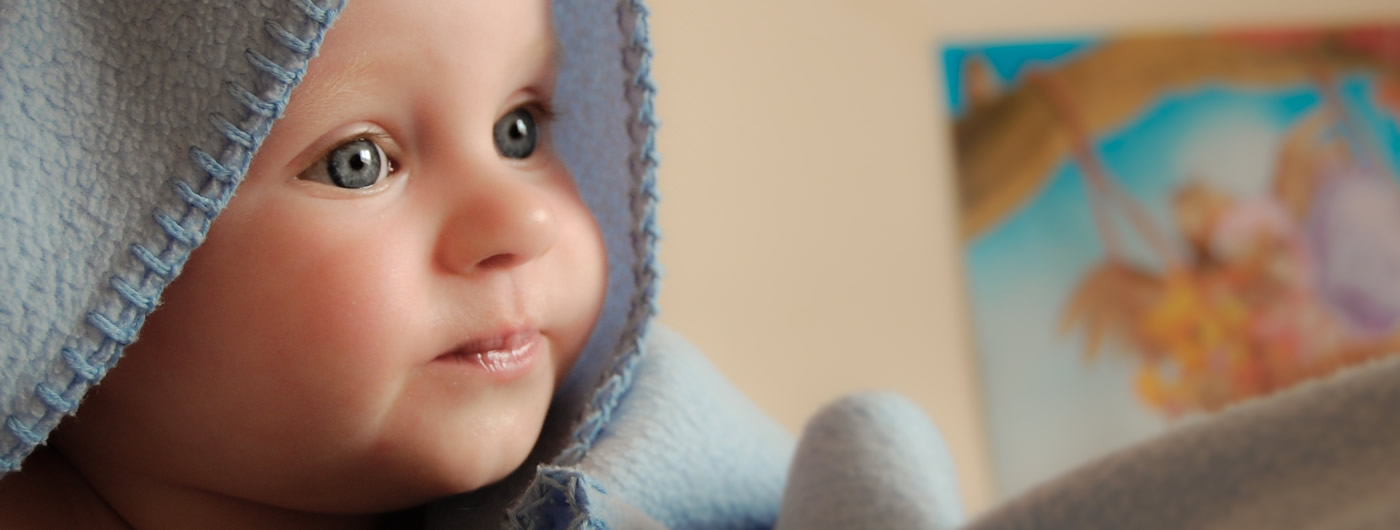
- Personalized treatment plans based on individual microbiome profiles
- Improved antifungal medications with fewer side effects
- Enhanced preventive strategies, possibly including maternal microbiome modulation during pregnancy
- Integration of advanced diagnostic tools in routine pediatric care
What role might technology play in future thrush prevention and treatment? Emerging technologies could contribute to thrush management through:
- AI-powered diagnostic tools for early detection
- Telemedicine platforms for remote consultation and follow-up
- Smart devices for monitoring oral health in infants
- Advanced probiotics tailored to individual microbiome needs
Thrush in newborns Information | Mount Sinai
Candidiasis – oral – newborn; Oral thrush – newborn; Fungal infection – mouth – newborn; Candida – oral – newborn
Thrush is a yeast infection of the tongue and mouth. This common infection can be passed between a mother and baby during breastfeeding.
Causes
Certain germs normally live in our bodies. While most germs are harmless, some can cause infection.
While most germs are harmless, some can cause infection.
Thrush occurs when too much of a yeast called Candida albicans grows in a baby’s mouth. Germs called bacteria and fungi naturally grow in our bodies. Our immune system helps keep these germs in check. But babies do not have fully-formed immune systems. That makes it easier for too much yeast (a type of fungus) to grow.
Thrush often occurs when mother or baby has taken antibiotics. Antibiotics treat infections from bacteria. They can also kill “good” bacteria, and this allows yeast to grow.
The yeast thrives in warm, moist areas. The baby’s mouth and the mother’s nipples are perfect places for a yeast infection.
Babies can also get a yeast infection on the diaper area at the same time. The yeast gets in the baby’s stool and can cause a diaper rash.
Symptoms
Symptoms of thrush in the baby include:
- White, velvety sores in the mouth and on the tongue
- Wiping the sores may cause bleeding
- Redness in the mouth
- Diaper rash
- Mood changes, such as being very fussy
- Refusing to nurse because of soreness
Some babies may not feel anything at all.
Symptoms of thrush in the mother include:
- Deep-pink, cracked, and sore nipples
- Tenderness and pain during and after nursing
Exams and Tests
Your health care provider can often diagnose thrush by looking at your baby’s mouth and tongue. The sores are easy to recognize.
Treatment
Your baby might not need any treatment. Thrush often goes away on its own in a few days.
Thrush often goes away on its own in a few days.
Your provider may prescribe antifungal medicine to treat thrush. You paint this medicine on your baby’s mouth and tongue.
If you have a yeast infection on your nipples, your provider may recommend an over-the-counter or prescription antifungal cream. You put this on your nipples to treat the infection.
If both you and your baby have the infection, you both need to be treated at the same time. Otherwise, you can pass the infection back and forth.
Outlook (Prognosis)
Thrush in babies is very common and can easily be treated. Let your provider know if thrush keeps coming back. It may be a sign of another health issue.
When to Contact a Medical Professional
Contact your provider if:
- Your baby has symptoms of thrush
- Your baby refuses to eat
- You have symptoms of a yeast infection on your nipples
Prevention
You may not be able to prevent thrush, but these steps may help:
- If you bottle feed your baby, clean and sterilize all equipment, including nipples.

- Clean and sterilize pacifiers and other toys that go in baby’s mouth.
- Change diapers often to help prevent yeast from causing diaper rash.
- Be sure to treat your nipples if you have a yeast infection.
Balest AL, Riley MM, O’Donnell B, Zarit JS. Neonatology. In: Zitelli BJ, McIntire SC, Nowalk AJ, Garrison J, eds. Zitelli and Davis’ Atlas of Pediatric Physical Diagnosis. 8th ed. Philadelphia, PA: Elsevier; 2023:chap 2.
Harrison GJ. Approach to infections in the fetus and newborn. In: Cherry JD, Harrison GJ, Kaplan SL, Steinbach WJ, Hotez PJ, eds. Feigin and Cherry’s Textbook of Pediatric Infectious Diseases. 8th ed. Philadelphia, PA: Elsevier; 2019:chap 66.
Last reviewed on: 12/12/2021
Reviewed by: Neil K. Kaneshiro, MD, MHA, Clinical Professor of Pediatrics, University of Washington School of Medicine, Seattle, WA. Also reviewed by David Zieve, MD, MHA, Medical Director, Brenda Conaway, Editorial Director, and the A.D.A.M. Editorial team.
Also reviewed by David Zieve, MD, MHA, Medical Director, Brenda Conaway, Editorial Director, and the A.D.A.M. Editorial team.
Thrush in men | nidirect
Thrush is a common yeast infection that affects men and women. Thrush is caused by a group of yeasts called Candida. It’s usually harmless but it can be uncomfortable and keep coming back. This page has information about thrush in men.
Symptoms of thrush in men
Some men may not experience any signs or symptoms of thrush.
If symptoms do appear, they can include:
- irritation, burning or itching under the foreskin or on the tip of the penis
- redness, or red patches under the foreskin or on the tip of the penis
- a discharge under the foreskin that may look like cottage cheese – there may also be an unpleasant smell
- difficulty pulling back the foreskin of your penis
Thrush as a skin infection
Thrush can affect other areas of the body such as the:
- armpits
- groin
- areas between your fingers
- skin between your genitals and anus
This usually causes a red, itchy or painful rash that scales over with white or yellow discharge. The rash may not be so obvious on darker skin.
The rash may not be so obvious on darker skin.
Oral thrush
Thrush can also affect the inside of the month. This is known as oral thrush.
- read more about oral thrush
When to get medical advice
See a GP if:
- you have the symptoms of thrush for the first time
- your thrush keeps coming back (more than twice in six months)
- treatment hasn’t worked
- you have thrush and a weakened immune system – for example because of diabetes, HIV or chemotherapy
If you have had unprotected sexual intercourse and develop discomfort in your penis, or discharge, you should go to a sexual health clinic.
Treatment for thrush
You’ll often need anti-fungal medicine to get rid of thrush. Your GP or pharmacist (see section below) can advise you about treating thrush.
Thrush should clear up within a week with treatment.
You don’t need to treat partners, unless they have symptoms.
Recurring thrush
You might need to take treatment for longer (for up to six months) if you keep getting thrush (you get it more than twice in six months).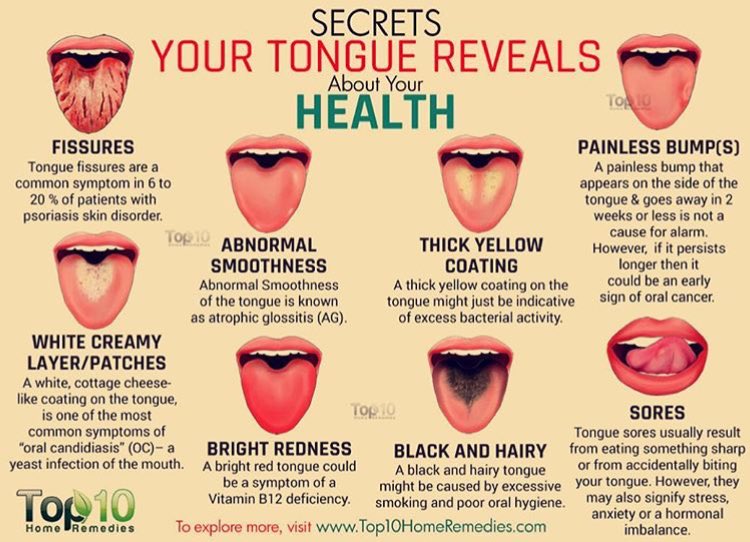
Your GP can help identify if there is something causing your thrush to last or recur. They’ll recommend how often you should use treatment.
Your pharmacist can help with thrush
You can buy some anti-fungal medication from pharmacies if you’ve had thrush diagnosed in the past and you know the symptoms.
Your pharmacist can recommend the best treatment for you. Ask if they have a private area to talk if you’re embarrassed.
You shouldn’t use antifungal medicine more than twice in six months without speaking to your pharmacist or doctor.
Things you can do yourself
There are things you can do to help ease discomfort and prevent thrush returning. This includes:
- using water and emollient (instead of soap) to wash your penis
- drying the affected area properly after washing
- wearing loose-fitting cotton underwear
- avoiding sex until thrush has cleared up
- using a condom to help stop it spreading
- taking showers instead of baths
Causes of thrush
Thrush isn’t classed as a sexually transmitted infection (STI) but it can be triggered by sex and sometimes passed on through sex.
Thrush is caused by a fungus called candida that is normally harmless. Thrush tends to grow in warm, moist conditions and develops if the balance of bacteria changes.
This can happen if:
- your skin is irritated or damaged
- you’re taking antibiotics
- you have poorly controlled diabetes
- you have a weakened immune system, for example, because of HIV or chemotherapy
Types of thrush
For more information about other types of thrush, see:
- oral thrush in babies
- vaginal thrush
- oral thrush in adults
More useful links
- How to use your health services
Help improve this page – send your feedback
why it occurs and what to do about it
Thrush after sex: why it occurs and what to do about it
Medical appointments
- Syphilidologist
- INFECTIONIST
- Dermatologist
- Therapist
- Cardiologist
- Oncologist
- Endocrinologist
- Neurologist
- Medical certificates
- Ultrasound diagnostics – ultrasound
- Functional diagnostics
- Urologist
- Venereologist
- Parasitologist
- Mammologist
- All services
Diagnosis
- Gynecology
- Dermatovenereology
- Cardiology
- Neurology
- Oncology
- Therapy
- Urology
- Endocrinology
- Infectology
Treatment
- A
- B
- B
- D
- D
- E
- Yo
- F
- Z
- and
- Y
- K
- L
- M
- H
- O
- P
- P
- C
- T
- W
- F
- X
- C
- H
- W
- SC
- E
- Yu
- I
COVID
Full range of medical care for COVID virus infection
CHECK-UP
Full range of complex medical diagnostics
Tests
take tests at affordable prices
Drugs 9013 1
specialized pharmacy
Online
specialist consultation
DISCOUNTS
Only profitable offers for you!
St. Petersburg, Ivana Chernykh st., 25A
Petersburg, Ivana Chernykh st., 25A
Mon.-Sat. from 9:00 – 20:00, sun. from 10:00 – 18:00
- home
- •
- News
- •
- Women Health
- •
Thrush after sex: why it occurs and what to do about it
Burning and cheesy discharge 1-3 days after intimacy are symptoms familiar to many girls. But do not blame your partner ahead of time – thrush itself is not related to sex and occurs for other reasons. It can be caused by prolonged use of antibiotics, hormonal changes, improper selection of intimate hygiene products, and many other factors.
Why does thrush get worse after sex
Most often, this situation occurs in girls who suffer from chronic thrush and do not receive proper treatment. The exchange of microflora with a partner, the ingress of sperm and secretions into the vagina, the use of lubricants and other intimate products – all this aggravates existing disorders and provokes a relapse.
The exchange of microflora with a partner, the ingress of sperm and secretions into the vagina, the use of lubricants and other intimate products – all this aggravates existing disorders and provokes a relapse.
The appearance of symptoms of thrush after sex also contributes to:
● non-observance of hygiene before and after sexual intercourse;
● frequent change of sexual partners or unprotected contacts;
● microtrauma of the vaginal mucosa.
Is it possible to get thrush from a partner
In men, candidiasis mainly affects the glans penis. If the partner does not follow hygiene and does not undergo treatment, a large number of Candida fungi can enter the vagina during sex. Further development of events depends on the immune defense and the presence of risk factors in a woman.
If the composition of the microflora is normal, then beneficial microorganisms quickly suppress the reproduction of fungi, and there will be no thrush. If a woman has recently taken antibiotics, is fond of douching and antibacterial gels, has hormonal disorders, then sexual contact can become a provoking factor for vaginal candidiasis.
If a woman has recently taken antibiotics, is fond of douching and antibacterial gels, has hormonal disorders, then sexual contact can become a provoking factor for vaginal candidiasis.
Sex with thrush – possible or not
In acute vaginal candidiasis and in the period of exacerbation of chronic thrush, it is recommended to refrain from sexual intercourse. The vaginal mucosa is inflamed, so intimacy will be uncomfortable for the woman and will exacerbate existing symptoms. In addition, vaginal suppositories, which are used to treat thrush, reduce the effectiveness of condoms – there is a risk of both STI infection and unplanned pregnancy.
What to do if you have symptoms of thrush
Even if a woman is sure that she has thrush, treatment should not be started without a visit to a gynecologist. The ID-Clinic doctor will perform a gynecological examination, take a vaginal swab to confirm the diagnosis, and if necessary, prescribe an extended health examination. Then the specialist will select an effective treatment, taking into account the cause of the problem, the severity of the inflammation and other individual characteristics of the body.
Then the specialist will select an effective treatment, taking into account the cause of the problem, the severity of the inflammation and other individual characteristics of the body.
A timely visit to the gynecologist is a necessary condition for maintaining and restoring reproductive health!
Tags:
sex
symptoms
mycoses
Cost
Inspection
Reception (examination, consultation) of a gynecologist
3000 ₽
B01.001.002
Reception (examination, consultation) of an obstetrician-gynecologist repeated
3000 ₽
Online consultation with a gynecologist
3000 ₽
Online consultation with a gynecologist (30 min)
2500 ₽
Make an appointment
St. Petersburg, Ivan Chernykh st., 25A
Petersburg, Ivan Chernykh st., 25A
Mon-Sat 09.00-20.00, Sun 10.00-18.00
By clicking the button you agree to the terms of the Privacy Policy
Krotov Kirill Yurievich
Urologist,
Oncologist,
Oncourologist,
Doctor of the highest categoryMake an appointment
SavchenkoMikhail Andreevich
Infectionist,
Hepatologist,
Doctor of the first category,
PhDMake an appointment
EfimovGeorgy Aleksandrovich
Infectionist,
ParasitologistMake an appointment
Tatyana Sergeevna Korneeva
Infectionist,
Hepatologist,
Ultrasound doctor,
PhDMake an appointment
Sizova Natalia Vladimirovna
Infectionist,
Doctor of the highest category,
Doctor of Medical Sciences,
ProfessorMake an appointment
TeslyaOlga Vladimirovna
Cardiologist,
Ultrasound doctor,
Functional diagnostics doctor,
Doctor of the highest categoryMake an appointment
Mayorova Svetlana Olegovna
Infectionist,
Doctor of the highest category,
Candidate of Medical SciencesMake an appointment
Zvontsova Svetlana Aleksandrovna
Infectionist,
ParasitologistMake an appointment
Kozminsky Evgeniy Borisovich
Dermatovenereologist,
Syphilidologist,
Doctor of the highest categoryMake an appointment
LavrenchukDmitry Vadimovich
Infectionist,
Hepatologist,
Therapist,
PhDMake an appointment
Fadeev Kirill Alexandrovich
Infectionist,
Hepatologist,
Parasitologist,
Doctor of the highest category,
PhDMake an appointment
Bortulev Sergey Alexandrovich
Head doctor of the clinic,
Therapist,
Cardiologist,
Functional diagnostics doctor,
Doctor of the highest category,
Candidate of Medical SciencesMake an appointment
Kiseleva Lyudmila Ivanovna
Therapist,
Pulmonologist,
Ultrasound doctor,
SomnologistMake an appointment
Bortuleva Victoria Valerievna
Dermatovenereologist,
Mycologist,
Podiatrist,
Doctor of the highest categoryMake an appointment
Savelyeva Karolina Anatolyevna
Endocrinologist,
Diabetologist,
Doctor of the highest category,
Candidate of Medical SciencesMake an appointment
VeliherMarina Georgievna
Therapist,
Ultrasound doctor,
Somnologist,
Psychologist,
RadiologistMake an appointment
SmirnovaUlyana Sergeevna
Gynecologist,
SexologistMake an appointment
Ulitko Tatyana Vladimirovna
Urologist
Make an appointment
Balandina Anna Borisovna
Infectionist,
Hepatologist,
Parasitologist,
RabiologistMake an appointment
Yuzefovich Tatyana Sergeevna
Neurologist,
Epileptologist,
Functional Diagnostics Physician,
Doctor of the highest categoryMake an appointment
Veronica Golovanova
Gynecologist,
Mammologist,
Oncogynecologist,
Gynecologist-Endocrinologist,
Ultrasound Doctor,
PhDMake an appointment
Anna Shekhovtsova
Endocrinologist,
Diabetologist,
Nutritionist,
NutritionistMake an appointment
Selivanova Marina Andreevna
Infectionist,
Hepatologist,
Parasitologist,
RabiologistMake an appointment
Elena Vertiletskaya
Gynecologist,
Gynecologist-endocrinologist,
Doctor of the highest categoryMake an appointment
KononchukOlga Nikolaevna
Infectionist,
Hepatologist,
Therapist,
Phthisiatrician,
Functional Diagnostics Doctor,
Doctor of the highest category,
Candidate of Medical SciencesMake an appointment
Alexey Kuznetsov
Infectionist,
HepatologistMake an appointment
All specialists
Other clinic services
Cystoscopy
Uroflowmetry
Bladder ultrasound
Urologist
Stories and testimonials from our patients
Prodoctors
We visited Tatyana Sergeevna for the first time. We chose her because we had the time we needed to record. In principle, we were satisfied with everything. The doctor examined, advised, prescribed tests. She was able to answer all of our questions and explained everything as it was. It is very comfortable to talk with Tatyana Sergeevna. The consultation itself lasted approximately 50 minutes, maybe an hour. There was enough time. Everyone is happy, no questions. If the need arises, we will contact the doctor again. I can recommend to visit this specialist.
We chose her because we had the time we needed to record. In principle, we were satisfied with everything. The doctor examined, advised, prescribed tests. She was able to answer all of our questions and explained everything as it was. It is very comfortable to talk with Tatyana Sergeevna. The consultation itself lasted approximately 50 minutes, maybe an hour. There was enough time. Everyone is happy, no questions. If the need arises, we will contact the doctor again. I can recommend to visit this specialist.
Specialist:
Korneeva Tatyana Sergeevna
Andrew
Hello! The interior of the Clinic and the reception staff give the impression of European quality, I don’t know about the correspondence between the appearance and qualifications of doctors, now I’m just sitting waiting for my specialist, but the price tag is charged, in my opinion, that’s why I put 4 stars
Prodoctors
Caring, compassionate and experienced doctor. The conclusion can be handed over, or sent by e-mail, which is convenient.
The conclusion can be handed over, or sent by e-mail, which is convenient.
No one has ever performed an ultrasound scan on me so carefully. He explained everything that he looks at and sees, what sizes of organs I have and which are normal, did not sit with a detached look, but commented on everything during the examination and immediately explained whether it was normal or not. From now on, I will do an ultrasound only with him. It turns out that he worked as a surgeon for many years, which makes itself felt in his detailed explanations and recommendations.
Specialist:
Baranov Alexey Vasilyevich
User (SberHealth)
The reception went well. Polite staff in the clinic, clean, tidy and pleasant. I chose the clinic by location, near the house and price category.
Anonymous
My husband and I turned to Korneeva Tatyana with a request for vaccinations against pneumococcal infection.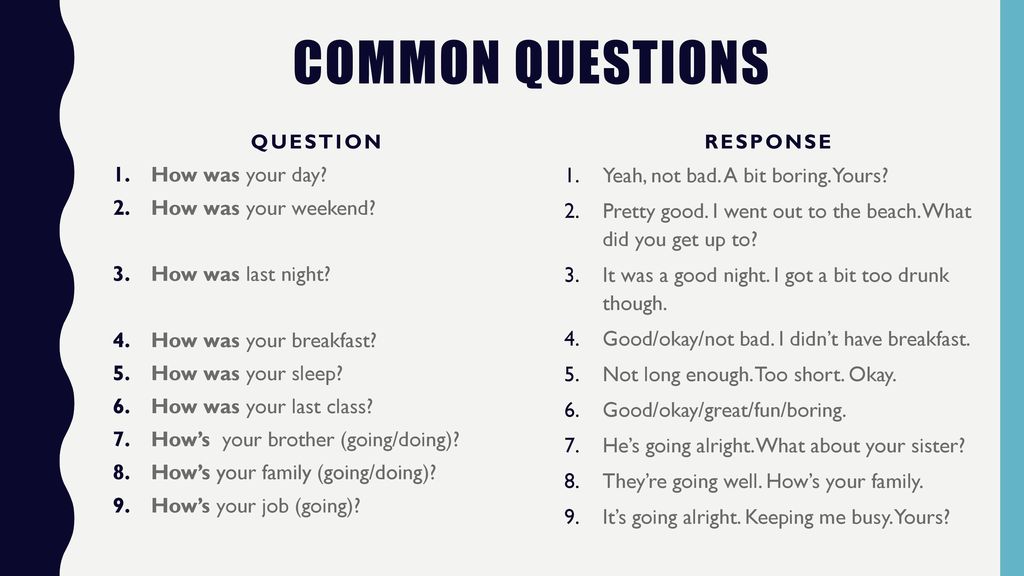 The clinic is taking all precautions due to COVID. The doctor conducted a full examination, consulted in detail about the vaccination, showed attentiveness and care for the patients. After vaccination was observed for 30 minutes. Friendly and attentive all the staff of the clinic.
The clinic is taking all precautions due to COVID. The doctor conducted a full examination, consulted in detail about the vaccination, showed attentiveness and care for the patients. After vaccination was observed for 30 minutes. Friendly and attentive all the staff of the clinic.
Specialist:
Korneeva Tatyana Sergeevna
Patient
I liked everything. Lyudmila Ivanovna is a sympathetic, attentive doctor. I was very satisfied with the reception. She provided me with recommendations and treatment. The specialist gave me enough time at the appointment. I will definitely contact her again.
Specialist:
Kiseleva Lyudmila Ivanovna
User (SberHealth)
I chose this doctor because there was a free appointment on the same day, which was important. The doctor explained all the issues that interested me and put a good treatment. The reception began without delay.
The doctor explained all the issues that interested me and put a good treatment. The reception began without delay.
Specialist:
Korneeva Tatyana Sergeevna
Eugene
I visited Victoria Valerievna a year ago. Unfortunately, my nail did not succumb to the appointments of Victoria Valerievna, I continue the battle. We agreed that I would come again if there were no improvements, but I never got around to it. Now, on the case: the doctor explains everything, in relation to the case, explains all the nuances. Looking at other people’s scary nails, probably, does not always encourage tactful communication, but this is not the case. I think you can and should go to the doctor.
Specialist:
Bortuleva Victoria Valerievna
User
My husband and I contacted ID-CLINIC for vaccination. Before that, clinics were called for two days and faced a lot of problems: some did not have the necessary vaccines or one vaccine at one address, and another at another. Cannot provide an international certificate. Before vaccination, a consultation with a therapist is required, for which you need to pay extra, despite the fact that the cost of the vaccine is high. Sunday is not ready to accept. It is necessary to register in advance. To receive information, you need to wait a long time, because. The call goes through the dispatcher. All the problems that were described above were easily resolved after a call to ID-CLINIC. The administrator of the clinic answered the call, quickly gave all the necessary information: the necessary vaccines are available, the international certificate will be issued, the consultation of the therapist is free, pre-registration is desirable, however, she immediately looked at the doctor’s schedule and invited me to come (it happened on Sunday). At the same time, the level of prices for the vaccines we were interested in was at the level, and for some even lower than in the previously viewed clinics.
Before that, clinics were called for two days and faced a lot of problems: some did not have the necessary vaccines or one vaccine at one address, and another at another. Cannot provide an international certificate. Before vaccination, a consultation with a therapist is required, for which you need to pay extra, despite the fact that the cost of the vaccine is high. Sunday is not ready to accept. It is necessary to register in advance. To receive information, you need to wait a long time, because. The call goes through the dispatcher. All the problems that were described above were easily resolved after a call to ID-CLINIC. The administrator of the clinic answered the call, quickly gave all the necessary information: the necessary vaccines are available, the international certificate will be issued, the consultation of the therapist is free, pre-registration is desirable, however, she immediately looked at the doctor’s schedule and invited me to come (it happened on Sunday). At the same time, the level of prices for the vaccines we were interested in was at the level, and for some even lower than in the previously viewed clinics. My husband and I immediately went, despite the fact that the clinic is located on the other side of the city from us. Quickly found, because. the entrance is directly from the street, and the house is small. Inside is very clean, quiet, comfortable waiting room. The administrator quickly completed the necessary documents and invited to the doctor. Doctor Selivanova M.A. answered all my questions in detail and clearly. The doctor is a very pleasant person, polite and attentive. The dialogue was built without the elements of intimidation, without creating psychological tension, which I often feel when visiting paid clinics. The doctor showed attention and care, gave recommendations, while I did not feel the slightest hint of imposing additional or more expensive services. For me, this attitude was a nice bonus to the feeling that I was in the hands of a professional. I will note the excellent work of the procedural sister, clearly, confidently, very carefully. After vaccinations, my husband and I were offered hot tea and sweets.
My husband and I immediately went, despite the fact that the clinic is located on the other side of the city from us. Quickly found, because. the entrance is directly from the street, and the house is small. Inside is very clean, quiet, comfortable waiting room. The administrator quickly completed the necessary documents and invited to the doctor. Doctor Selivanova M.A. answered all my questions in detail and clearly. The doctor is a very pleasant person, polite and attentive. The dialogue was built without the elements of intimidation, without creating psychological tension, which I often feel when visiting paid clinics. The doctor showed attention and care, gave recommendations, while I did not feel the slightest hint of imposing additional or more expensive services. For me, this attitude was a nice bonus to the feeling that I was in the hands of a professional. I will note the excellent work of the procedural sister, clearly, confidently, very carefully. After vaccinations, my husband and I were offered hot tea and sweets. We were asked to take some rest in the hall. After the doctor made sure that we were feeling well, we were given documents and recommendations.
We were asked to take some rest in the hall. After the doctor made sure that we were feeling well, we were given documents and recommendations.
The overall impression is very positive. We thank the staff of the clinic!
Specialist:
Selivanova Marina Andreevna
Prodoctors
Was vaccinated against HPV. I liked that the doctor carefully examined, interviewed in detail, consulted, answered all questions. There was no feeling that the inspection “for show”, as is often the case. After vaccination, they left to observe the condition. And only after that they were released. Tatyana Sergeevna gave recommendations in case there were any reactions at the injection site. In general, everyone liked it! For the next revaccination, I will sign up again to this doctor and to the clinic!
Specialist:
Korneeva Tatyana Sergeevna
See more reviews
Make an appointment
St. Petersburg, Ivan Chernykh st., 25A
Petersburg, Ivan Chernykh st., 25A
Mon-Sat. from 9:00 – 20:00, sun. from 10:00 – 18:00
By clicking the button you agree to the terms of the Privacy Policy
There are contraindications,
specialist consultation is necessary
incubation period, which accelerates the development of the disease, how to treat candidiasis
Three quarters of all women are familiar with the symptoms of thrush or urogenital candidiasis, and 10% of them face this problem regularly [1] . But not everyone knows what causes an infection in the body and when the first symptoms occur.
How infection occurs
Thrush is one of the most common infectious and inflammatory diseases in gynecology [2] . Symptoms – redness of the mucous membrane, itching, burning, discharge – are similar to signs of genital infections. But unlike trichomoniasis, gonorrhea and other sexually transmitted diseases, thrush is not a sexually transmitted disease.
Symptoms – redness of the mucous membrane, itching, burning, discharge – are similar to signs of genital infections. But unlike trichomoniasis, gonorrhea and other sexually transmitted diseases, thrush is not a sexually transmitted disease.
The causative agent of thrush is the fungus Candida. Some of its species live in the body, are part of the normal microflora of the vagina, intestines, and oral cavity. But unlike pathogens that enter from the outside and cause diseases, they do not harm the body.
The number of fungi is controlled by the protective mechanisms of the immune system and lactobacilli, the main representatives of the normal flora of the vagina. They compete with candida and do not allow them to multiply intensively. They create an acidic environment in which fungi and pathogenic bacteria are uncomfortable.
But the microbial composition of the vagina is not constant. When there are fewer lactobacilli, candida begins to multiply actively. The sharp growth of colonies of the fungus leads to the appearance of signs of the disease. Therefore, Candida is classified as an opportunistic pathogen, that is, fungi cause disease only under certain conditions. The source of infection is most often the body itself: the fungus is initially present on the vaginal mucosa or enters it from the skin, from the gastrointestinal tract, or from the mouth.
The sharp growth of colonies of the fungus leads to the appearance of signs of the disease. Therefore, Candida is classified as an opportunistic pathogen, that is, fungi cause disease only under certain conditions. The source of infection is most often the body itself: the fungus is initially present on the vaginal mucosa or enters it from the skin, from the gastrointestinal tract, or from the mouth.
Sexual transmission of thrush is possible, although opinions about this in the scientific literature differ. Some scientists do not consider it significant, others argue that in about 30-40% of cases, candidiasis is infected during sexual intercourse [3] . But only 5–25% of men whose partners have thrush develop the fungus. For a woman, the probability of getting infected from a partner is 80% [4] .
How long does it take for thrush to appear
Most infectious diseases have an incubation period – the time interval between when the pathogen enters the body and when the first symptoms appear. It is more difficult with candidiasis: it is impossible to say exactly how long thrush appears after infection. The reason for this ambiguity lies in the properties of the fungus.
It is more difficult with candidiasis: it is impossible to say exactly how long thrush appears after infection. The reason for this ambiguity lies in the properties of the fungus.
Even if a person has contracted the fungus from a partner, there may be no symptoms at all. Or they won’t show up right away. A strong immune system does not allow pathogens to multiply, and they sleep for years. But when favorable conditions for the fungus are created in the body, it is activated, symptoms of the disease appear. That is, from the moment of infection with thrush until the first signs appear, it can take from 1-3 days to several years.
How candidiasis develops in women
The pathological process starts when the fungus enters the genital mucosa from the external environment or from a focus in the body itself. This is influenced not only by the mechanisms of the pathogen, but also by predisposing factors. They are individual, thrush is different for everyone.
Let’s talk about the development of vulvovaginal candidiasis – the most common form of thrush. This is a fungal inflammation of the external genitalia in women, which occurs in several stages:
This is a fungal inflammation of the external genitalia in women, which occurs in several stages:
- The balance of the microflora of the body is disturbed due to a decrease in immunity, hormonal imbalance, and certain drugs. This leads to a shift in the acid-base balance in the vagina. The normal acid reaction is replaced by an alkaline one.
- Alkaline environment inhibits the growth of lactobacilli – the main representatives of healthy vaginal microflora. The number of beneficial bacteria is drastically reduced.
- Due to the reduction in the number of lactobacilli, Candida fungi develop. The causative agent of thrush penetrates the vagina, attaches to the surface layer of the mucosa and multiplies intensively. The same thing happens if the fungus was already on the genitals.
- The fungus penetrates into the deep layers of the mucosa. The causative agent and the reaction of the immune system cause symptoms of inflammation: swelling, redness, rashes, itching.

In the acute form of thrush, this stage lasts no longer than two months, then the body returns to normal. But sometimes the disease becomes chronic, for example, when the immune system is weakened or infected with rare species of Candida that are resistant to antifungal drugs. Then thrush can occur four times a year or more often. Another variant of the chronic course is persistent, when the symptoms persist constantly, but are not pronounced.
- If the immune system is compromised (for example, with HIV), systemic candidiasis develops. Candida overcomes defense mechanisms, enters blood vessels, affects internal organs and tissues [5] .
“If left untreated, thrush becomes chronic over time, can lead to infertility, and often leads to the addition of other infections, as well as a failure in the entire immune system.”
Dobrokhotova Yuliya Eduardovna, Doctor of Medical Sciences, Professor, Head of the Department of Obstetrics and Gynecology, Faculty of Medicine, Federal State Budgetary Educational Institution of Higher Education Russian National Research Medical University. N.I. Pirogova, Laureate of the Prize of the Government of the Russian Federation in the field of science and technology, Honored Doctor of the Russian Federation, President of the National Association of Obstetricians-Gynecologists and Reproductologists “Women’s Health”
N.I. Pirogova, Laureate of the Prize of the Government of the Russian Federation in the field of science and technology, Honored Doctor of the Russian Federation, President of the National Association of Obstetricians-Gynecologists and Reproductologists “Women’s Health”
What contributes to the rapid development of the disease
The fungus needs special conditions in order for it to actively multiply. These factors are divided into internal and external.
Internal risk factors for thrush include:
● diseases that lead to impaired immunity – HIV in the AIDS stage, tuberculosis, blood diseases, oncopathology;
● diseases associated with metabolic disorders – diabetes mellitus, hypothyroidism, obesity;
● physiological changes in hormonal levels – often thrush develops in pregnant women, as well as in menopause;
● inflammation of the reproductive system;
● allergies;
● deficiency of vitamins.
External factors:
● taking immunosuppressants – drugs that suppress the immune system;
● radiation and chemotherapy;
● long-term antibiotic treatment;
● taking corticosteroids;
● hormone replacement therapy or hormonal contraception.
Mechanical factors can also become triggers for thrush:
● tight synthetic underwear;
● panty liners;
● frequent douching;
● non-compliance with the rules of intimate hygiene;
● unprotected sex.
How candidiasis develops in men
Men get thrush on average 10 times less than women [6] . This is due to physiological characteristics. The surface of the male genitalia is not such a favorable environment for the fungus as the female genital organs.
Male thrush occurs in the form of candidal balanoposthitis – inflammation of the glans penis and foreskin. The disease is more common in sexually active men aged 18–30 years [7] .
Healthy men are not too often carriers of Candida – they are found in only 14-18% of those studied. Most patients are infected sexually [8] .
In men, thrush develops in the same way as in women. The fungus enters the mucous membrane of the genital organs, attaches to it and multiplies under favorable conditions. The risk of developing thrush is higher if the man has immune or metabolic disorders.
Candida balanoposthitis is manifested by redness of the glans penis and foreskin, itching and burning. The skin becomes dry and shiny, as if varnished. Areas of grayish-white plaque, erosion and cracks appear on the affected surface. Some patients note frequent urination, discomfort in the urethra – signs of adjoining candidal urethritis.
“If a woman has thrush, then treatment is also necessary for her sexual partner, because in men, candidiasis may not appear both at the beginning of infection and up to 1.5 years from infection. Therefore, it is important to treat both partners. Candidiasis therapy can be supplemented by immunomodulators — Gepon [9]
Therefore, it is important to treat both partners. Candidiasis therapy can be supplemented by immunomodulators — Gepon [9]
is used just for topical use for women and men, and a relapse-free effect is observed up to 1.5 years.
Dobrokhotova Yulia Eduardovna, Doctor of Medical Sciences, Professor, Honored Doctor of the Russian Federation
Treatment of thrush
Antifungals
Most often, with candidiasis, drugs with active ingredients such as fluconazole, itraconazole, clotrimazole, ketoconazole, econazole are prescribed. Two groups of antifungal agents are used:
● Local – creams, gels, solutions, vaginal tablets, balls, suppositories. They act on the surface of the mucosa and almost do not enter the bloodstream, which minimizes the risk of side effects.
● Systemic – tablets. The active substance is absorbed through the walls of the intestine into the blood and enters all tissues and organs. Due to this, systemic drugs cope even with deep candidiasis. But when they are taken, side effects are possible.
But when they are taken, side effects are possible.
In acute uncomplicated course, it is usually possible to confine ourselves to local treatment. Vaginal tablets, suppositories, balls with antifungal drugs are prescribed in a course of 3 to 14 days: depending on the active substance and its concentration [10] .
Chronic candidiasis is more difficult to treat. With frequent relapses, in addition to the main course, maintenance therapy is prescribed – one tablet of a systemic drug per week for 6 months [11] .
“When re-treating thrush, you should not use the previously prescribed drug on your own, especially with monotherapy. It is important not to repeat each subsequent treatment with the previous one, because resistant forms of the fungus may form and this will lead to chronic candidiasis. Most often, it is ideal to combine with an immunomodulator for topical use, for example, Gepon.
Dobrokhotova Yulia Eduardovna, Doctor of Medical Sciences, Professor, Honored Doctor of the Russian Federation
Probiotics
With thrush, the composition of the microflora of the vagina is disturbed. It is not enough just to kill the fungus – it is also important to increase the number of beneficial bacteria. For this, suppositories with probiotics – live lactobacilli are sometimes prescribed.
It is not enough just to kill the fungus – it is also important to increase the number of beneficial bacteria. For this, suppositories with probiotics – live lactobacilli are sometimes prescribed.
Immunomodulators
In the treatment of chronic thrush, risk factors are primarily eliminated. Additionally, the doctor may prescribe immunomodulatory drugs. There are two groups of funds: some increase the overall resistance of the body, others enhance local immunity.
For the treatment of recurrent thrush, the doctor may prescribe a local immunomodulatory drug Gepon. It helps to increase the activity of cells that protect the body from bacteria and fungi, inhibits the reproduction of viruses. The drug does not require prior determination of sensitivity to various types of fungi. According to research results, 2 days after application, the following symptoms disappeared in 83% of patients: itching, swelling, burning, redness [12] .
Main
➢ Thrush is not a sexually transmitted disease. But sexual transmission of the infection cannot be ruled out.
But sexual transmission of the infection cannot be ruled out.
➢ Usually the causative agent – Candida fungus – stays in the body for a long time and is activated only under certain conditions.
➢ The development of thrush is facilitated by a decrease in general and local immunity, hormonal disorders, and antibiotics.
➢ The disease occurs in an acute or chronic form.
➢ Thrush is treated with antifungal medications. Additionally, probiotics and immunomodulators are prescribed.
[1] Yunusova E. I. et al. Urogenital candidiasis: the current state of the problem // Medical scientific and practical portal “Attending Doctor”. – 09/23/2019. — URL: https://www.lvrach.ru/2019/09/15437373
[2] Popova AL, Dvoryansky SA, Yagovkina NV Modern aspects of treatment and prevention of vulvovaginal candidiasis (literature review) // Vyatskiy Medical Bulletin. – 2013. – No. 4. — pp. 31–35. — URL: https://cyberleninka.ru/article/n/sovremennye-aspekty-lecheniya-i-profilaktiki-vulvovaginalnogo-kandidoza-obzor-literatury/viewer
31–35. — URL: https://cyberleninka.ru/article/n/sovremennye-aspekty-lecheniya-i-profilaktiki-vulvovaginalnogo-kandidoza-obzor-literatury/viewer
[3] Kungurov NV, Gerasimova NM, Vishnevskaya IF Modern ideas about the treatment of urogenital candidiasis // Medical scientific and practical portal “Attending Doctor”. – 27.08.2004. — URL: https://www.lvrach.ru/2004/06/4531468
[4] Gomberg MA, Solovyov AM, Lyubopytova DA Urogenital candidiasis: etiopathogenesis, diagnosis and treatment // Medical Council. – 2008. – No. 7. – T.1. — S. 19–25. — URL: https://cyberleninka.ru/article/n/urogenitalnyy-kandidoz-etiopatogenez-diagnostika-i-lechenie/viewer
[5] Prilepskaya VN, Bairamova GR Modern concepts of vaginal candidiasis // “BC”. – 1998. – No. 5. — URL: https://www.rmj.ru/articles/ginekologiya/SOVREMENNYE_PREDSTAVLENIYa_O_VAGINALYNOM_KANDIDOZE/
[6] Yunusova E. I. et al. Urogenital candidiasis: the current state of the problem // Medical scientific and practical portal “Attending Doctor”. – 09/23/2019. — URL: https://www.lvrach.ru/2019/09/15437373
– 09/23/2019. — URL: https://www.lvrach.ru/2019/09/15437373
[7] Nogay KG Features of candidal balanoposthitis // Journal of Siberian Medical Sciences. – 2007. – No. 5. — URL: https://cyberleninka.ru/article/n/osobennosti-kandidoznogo-balanopostita/viewer
[8] Mazo Ye. B., Popov S. V. Monodose therapy for candidal balanoposthitis // BC. – 06/07/2006. – No. 12. – S. 906. – URL: https://www.rmj.ru/articles/urologiya/Monodoznaya_terapiya_kandidoznogo_balanopostita/
[9] Shabashova N. V., et al. Disturbances of local immunity and immunotherapy with Gepon in chronic inflammation of the mucous membranes of different localization. Bulletin of the North-Western State Medical University. I.I. Mechnikov. 2010. No. 4.
[10] Diagnosis and treatment of diseases accompanied by vaginal discharge // Medical scientific and practical portal “Attending Doctor”. — URL: https://www.lvrach.ru/2006/10/4534476
[11] Savicheva AM, Shipitsyna EV Recurrent urogenital candidiasis: features of diagnosis and treatment // Medical Council.